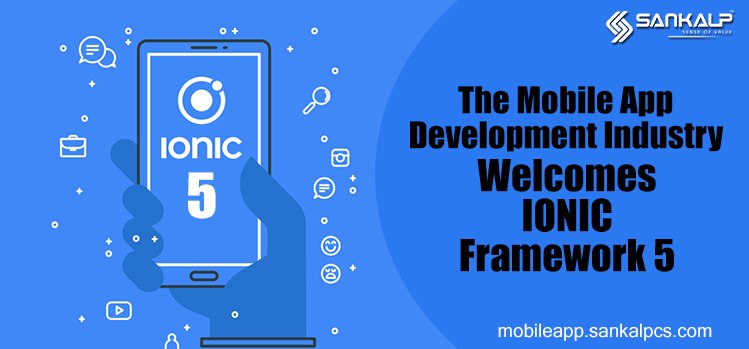The COVID-19 pandemic will have an enduring effect not only on our economy but on how we set about our daily lives, and things aren’t likely to return to pre-pandemic norms.
While this pandemic has forced many businesses to scale back or suspend operations, affecting their bottom line, it’s helped to accelerate a few emerging technologies. There are many fields of innovations that support a reduction in human-to-human contact, automate processes, and increase productivity amid social distancing.
As more data emerges and trends become apparent, there’s enough room for businesses to overcome the challenges brought on by the pandemic and come out stronger on the opposite end.
This post will take a glance at the top emerging mobile trends that companies should look closely at to emerge a more robust post-COVID-19 world with new business ventures.
5G connectivity
The industry buzz surrounding 5G technology and its impact on the next generation of connectivity and services has been circulating over the last year or so. Yet, the technology still isn’t widely available. 5G is not based on 4G; instead, it’s an entirely new network infrastructure. And while it holds the potential to revolutionize the way mobile networks function, telecom providers are slow to roll out the technology, offering limited 5G service.
The telecom providers have been hesitant to create capacities for 5G technology because they haven’t been confident the demand from consumers is there. However, due to COVID-19, the 5G market may materialize before expected.
As large numbers of individuals are forced to isolate, a rise in working and studying from home has been stressing networks and creating higher demand for bandwidth. This should prepone the 5G launches across the globe. That would eventually spur the mobile app development trends as more companies will be looking forward to creating mobile apps that are in sync with the 5G technology.
Cloud computing
Like 5G technology, cloud computing isn’t new either. As the virus spread, people were forced to work from home and online learning models were implemented, the demand for cloud-based video conferencing and teaching has skyrocketed. Various cloud service vendors have actively upgraded their functions and provided resources to satisfy this demand, including the likes of Zoom and Microsoft Teams.
Moving forward, businesses and academic institutions are likely to make use of this technology still, as student and employee behaviours will change. Twitter has already announced that its people can forever work from home. As demand for this technology continues to grow, implementing this technology into mobile applications for more easy access is going to be the key.
Artificial intelligence (AI)
Post-COVID-19, consumer habits won’t return to pre-pandemic patterns. Consumers will purchase more goods and services online, and increasing numbers of individuals will work remotely. As companies begin to navigate the post-COVID-19 world as economies slowly begin to reopen, the appliance of AI (AI) is going to be extremely valuable in helping them adapt to those new trends.
AI is going to be particularly useful for those in retail. Through machine learning and advanced data analytics, AI will help these companies detect new purchasing patterns and deliver a more fabulous personalized experience to online customers.
AI tools analyse large amounts of knowledge to find out underlying patterns, enabling computer systems to form decisions, predict human behaviour, and recognize images and human speech, among many other things. AI-enabled systems also continuously learn and adapt.
Companies like Amazon and Flipkart already use AI. These capabilities are going to be extremely valuable as companies confront and adapt to subsequent normal once this pandemic subsides.
Virtual reality/augmented reality (VR/AR)
This pandemic has increased the number of individuals using VR headsets to play video games, explore virtual travel destinations, and partake in online entertainment. Businesses have also been experimenting with VR platforms to coach employees, hold conferences, collaborate on projects, and connect employees virtually.
According to eMarketer, VR headset maker, HTC held its first virtual “VIVE Ecosystem Conference” entirely in VR. The March 2020 event, which drew 2,000 registrants from quite 55 countries, marked the first environmental industry event that was wholly replaced by extended reality (XR), an umbrella term that encompasses VR, augmented reality (AR), and mixed reality (MR).
Now that companies and consumers know the extent to which this technology is often used, we are likely to ascertain more virtual conferences and human interactions as our new typical sets in.
Voice-tech in mobile applications
Since people are awry of touching things as the result of COVID-19 scare, the voice-tech mobile application will see a surge in the post-pandemic era.
Voice usage will still increase and reach other smart-home components implicated as major germ hubs. As more TVs and entertainment components, light switches, appliances, plumbing fixtures, and alarm systems incorporate voice control functionality, there’ll be less got to touch them.
Final Thoughts
The aftermath of COVID-19 will be likely to accelerate significantly several significant trends that were already well underway before the pandemic. As companies begin to shift their focus towards recovery, they need to still invest within the digital transformation initiatives; this pandemic likely forced them to adapt by continuing to leverage mobile technologies.
By staying up to date on emerging technologies like those listed above, businesses will position themselves to surge ahead with new vigour. As we’ve learned, companies that will shift technology capacity and investments to mobile platforms will mitigate the business risks related to the COVID-19 pandemic and keep their companies running smoothly now and in the future.
Gear up for the post-pandemic era, get in touch with the best company in mobile app development today.
Call: Sankalp: +91 9881748645 or email: sales@sankalpcs.com




